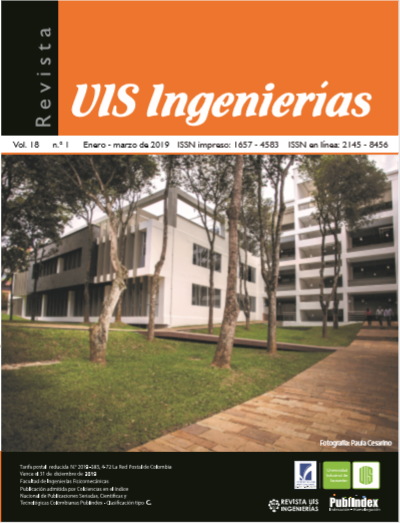Impact of human relations on the competitiveness of the associations
Published 2019-01-01
Keywords
- administration,
- business model,
- competitiveness,
- human capital,
- organizational culture
How to Cite
Abstract
The emergence of human relations theory in management incorporated influential aspects of business productivity such as the organizational climate and its impact on the behavior and the efficiency of the people who constitutes the company. Elements such as those framed in Factor C, combined with a structured business model, lead to a continuous improvement in the processes, in the sense of well-being and in the sense of belonging of the people. This article presents a model that through experiential learning techniques allows for the diagnosis of internal and external factors that can affect business productivity from the point of view of human relations by identifying the limiting paradigms that impede progress and sustainable development.
Downloads
References
T. Kijek and A. Kijek, “Is innovation the key to solving the productivity paradox?,” Journal of Innovation & Knowledge, 2018. doi: 10.1016/j.jik.2017.12.010
J. Salazar, J. Guerrero; Y. Machado y R. Canedo, “Clima y cultura organizacional: dos componentes esenciales en la productividad laboral,” Revista ACIMED, vol. 20, no. 4, pp. 67-75, 2009.
R. Shanker, R. Bhanugopan, B. Van der Heijdenbd and M. Farrell, “Organizational climate for innovation and organizational performance: The mediating effect of innovative work behavior,” Journal of Vocational Behavior, vol. 100, pp. 67–77, 2017. doi: 10.1016/j.jvb.2017.02.004
E. Venutolo, “Estudio del clima laboral y la productividad en empresas pequeñas y medianas: el transporte vertical en la ciudad autónoma de buenos aires”, tesis doctoral, Universidad Politécnica de Valencia, España, 2009.
M. Chiang, M. Martín y A. Núñez, Relaciones entre el clima organizacional y la satisfacción laboral. Madrid, España: Editorial Comillas, 2010.
J. Ramírez, “Cultura organizacional e identidad en la nueva competitividad”, Revista Innovar Journal Revista de Ciencias Administrativas y Sociales, vol. 12, no. 12, pp. 45-63, 1998.
I. Chiavenato, Introducción a la teoría general de la administración. McGraw-Hill, 2006.
H. Leroy, J. Segers, D. Dierendonck and D. Hartog, “Managing people in organizations: Integrating the study of HRM and leadership”. Human Resource Management Review, vol. 28, no. 3, pp. 249–257, 2018. doi: 10.1016/j.hrmr.2018.02.002
R. Vázquez, Habilidades directivas y técnicas de liderazgo: Su aplicación en la gestión de equipos de trabajo. España: Ideaspropias Editorial S.L., 2005.
D. J. Hughes, A. Lee, A. W. Tian, A. Newman, y A. Legood, “Leadership, creativity, and innovation: A critical review and practical recommendations,” Leadersh. Q., vol. 29, no. 5, pp. 549–569, 2018. doi: 10.1016/j.leaqua.2018.03.001
M. Carcamo, Las relaciones humanas y la administración del personal. Santiago de Chile: Editorial Andres Bello, 1968.
A. Osterwolder y Y. Pigneur, “Generación de modelos de negocios. Un manual para visionarios, revolucionarios y retadores. Bogotá : Planeta Colombia, 2017.
Guía para gestionar la innovación, Reflexiones. Consejería de Ciencia, Tecnología, Industria y Comercio, San Cristóbal, 2016, pp. 14.
P. Morcillo, Cultura e innovación empresarial: la conexión perfecta. México: Ediciones Paraninfo. S.A., 2007
T. Michaelis, R. Aladin and J.Pollack, “Innovation culture and the performance of new product launches: A global study,” J. Bus. Ventur. Insights, vol. 9, pp. 116–127, 2018, doi: 10.1016/j.jbvi.2018.04.001
M. Agudelo, B. Patiño y M. Ramos, “Conceptualización del factor C. Antecedentes y perspectivas”, Revista Ingeniería Solidaría, vol. 6, no. 10, pp. 95-101, 2010.
M. Kramer y M. Porter, “Estrategia y sociedad”, Harvard Business Review, vol. 84, no. 12, pp. 45-56, 2006.
F. López, América Latina 2020: escenarios, alternativas, estrategias. México: Temas Grupo Editorial, 2009.
W. Haque, “Experiential Learning: Beyond the Classroom and Connecting with the Industry”, en Tomorrow’s Learning: Involving Everyone. Learning with and about Technologies and Computing, Springer, Berlin, Heidelberg, 2017, pp. 443–452.
M. Romero-Ariza, “El aprendizaje experiencial y las nuevas demandas formativas”, Revista de antropología experimental, vol. 10, pp. 89-102, 2010.
A. Del Agulla y A. Padilla, “Factores derminantes de la innovación en empresas de economía social. La importancia de la formación y de la actitud estratégica”. CIRIEC-España, Revista de Economía Pública, Social y Cooperativa, vol. 67, pp. 129-155, 2010.
C. Mendieta y O. Vela, Ni tú ni yo: Cómo llegar a acuerdos. Barcelona, España: Editorial Grao, 2005.

